Genre: Sports Developer: Electronic Arts Publisher: Electronic Arts Players: 1-2 Released: 1991
In every retro game shop there is always a big bin of loose Genesis sports game cartridges on sale for $1, all piled up like trash. What a shame. At one time the Genesis was known for being the premier video game console for sports games, and it was for good reason. During the entire 16-bit war it was no secret that sports games looked and sounded great on the SNES but played the best on Sega’s blazing fast sports juggernaut, the Genesis.
John Madden Football ’92 is an American football game released by Electronic Arts in 1991 alongside Sega’s very own Sports Talk football and Tecmo’s Tecmo Super Bowl (NES). Madden ’92 was a huge improvement over the first console installment of the game, boasting better colors, cleaner graphics, faster speed, more teams, four different weather effects, quarterback substitutions/injuries, two-player co-op gameplay, and the ability to overturn pass interference calls via the added instant replay feature. It was the turning point for EA’s transition into making video games catered more towards the home console gamer.
JMF ’92 was not licensed by the NFL, but it does a pretty good job of convincing you otherwise, as all twenty-eight teams of the ’91 season are represented by their actual city names. All of the team colors are surprisingly accurate to the era, and while there may be a yellow stripe missing here or there or a shade being too dark or light, for the most part all of the team home and away jerseys are spot on. That is one of the best things about the game. The early ’90s were a great era in professional football, arguably the best and most competitive, so naturally as an NFL historian I’m quite partial to football video games with the original creamsicle Buccaneers, red white and blue Patriots, orange crush Broncos and my favorite, the old baby blue Houston Oilers uniforms. They are all here.
Some interesting changes to the teams are that the Jets are referred to as New Jersey instead of New York, and the Raiders (who played in L.A. at the time) are referred to as Oakland. New Jersey is where the Jets actually play, and Oakland is where the Raiders played when John coached them to Super Bowl glory in his hall of fame coaching career, so the changes EA made actually add to this game’s charm. Unfortunately, the absence of an NFL license means that the game uses the player’s uniform numbers rather than their names, which is why its “too good to be true” roster has been all but forgotten. Any football purist will quickly notice that the game’s roster is quite a bit different than that of Madden 93’s and is a lot more stacked. In fact, I find the roster in Madden ’92 to be one of the best in the history of sports video games, right up there with Lakers vs Celtics and the NBA playoffs. They’re all here: Joe Montana (and Steve Young on the same team!), Lawrence Taylor, Howie Long, Reggie White, Barry Sanders – you name ’em, but the best thing about it is that each and every player has his actual skill levels. Barry Sanders is blazingly fast, Randall Cunningham is hard to get a hold of, Bruce Smith takes QBs out of the game, Jerry Rice catches anything you throw at him, and Dan Marino throws the fastest bullet in the game.
Far and away, the best thing about John Madden Football ’92 is the gameplay. It has more of an arcade style than that of the shinier, more colorful Madden ’93. You can dive twelve yards and pull in that last minute hail mary touchdown, have fun wreaking absolute havoc on your opponents kicking game, or break tackles all day long. The controls are fluid, ultra responsive, and easy. The action is fast and consistent, and the game plays better at higher speeds than any football game ever released on the SNES. Easily enough, it is played with only three buttons and is very simple to control, even with very little knowledge of football. There isn’t anything overly complicated here, be it the easy to navigate interface at the opening or the play selection screen which uses the “three options at a time” style, much like the later Maddens, only with a smaller playbook. My personal favorite little thing about the gameplay is how on defense you can literally compromise the neutral zone and get right up on the offensive line giving you one hell of a head start on the snap, allowing you to completely decimate the quarterback. If you can time that “A” button dive hit just right you may just put him out of the game, bringing out the infamous ambulance that mows down everything in its path. You’ve been forewarned; the ambulance shows no mercy!
With the music and sound, it seems as if EA cut a few corners with this one. At the very least, it definitely took a conservative approach compared to what Sega was able to do with the technically impressive Sports Talk Football in 1991. There are only two songs in the entire game, and both of them actually sound very dated, especially considering what the Genesis was capable of. The in-game sound effects are way better than the original Madden, and gone are the players screaming like they are being tortured. Now they just sound like they’ve had the breath knocked out of them, along with the usual “pads smacking together” sound effect that was used in the later Genesis Maddens.
The graphics are easy on the eyes compared to a lot of other early Genesis football games, but the animation is somewhat lacking. Although it is massively improved over the original Madden, the animation isn’t anywhere close to as smooth as those in Madden ’94/Bill Walsh College Football. Not that it detracts from the gameplay, but it definitely could’ve used a few more frames on the tackling/diving animations. The players look great though, even though they are all the same size, and the thing on their heads looks absolutely nothing at all like a football helmet. From a technical standpoint, Madden ’92 is solid. It has fast gameplay with no slowdown, great scaling, and crisp, vibrant colors.
One of the biggest problems about old sports games is that they have little to no replay value whatsoever, unless you’re just feeling nostalgic for those old uniforms and rosters. Unfortunately, Madden ’92 falls into that category as it doesn’t even have a season mode. There is a sixteen team playoff mode that uses a password system to continue, but aside from that it’s just, well… football. I remember when I was a kid I used to write out my own season schedule to play and keep track of my own stats, often going 16-0 and running the table in the playoffs, which leads me into the games biggest flaw: its ridiculously stupid AI. The computer poses absolutely no challenge whatsoever, and not because I’ve been playing the game for twenty years, but because the computer opponent fumbles the play-calling and rarely uses its teams weapons against you. For instance, it’s not uncommon for the computer to punt on fourth down with less than a minute to go when they are down by less than six points.
Madden ’92 usually gets passed over in favor of the ’93 version, which is a true 16-bit legend and when EA started to go for more realism, abandoning what it thought were glitches and flaws. In actuality, Madden ’92’s flaws are what makes it a great game. The gameplay is especially fun against a human opponent and has great “pick up and playability” with the same arcade style of gameplay that made Tecmo Super Bowl so fun. It’s not as exaggerated, but it is there. The way you can terrorize the quarterback in Madden ’92 is ridiculously fun and a great way to vent some frustrations, in a cruel “Road Rash 2 crowbar to the head” kind of way. So the next time you’re looking for a great deal at the game shop look no further than that ugly red, white and green abomination of a Genesis cartridge that is John Madden Football ’92, and remember to never judge a game by its cover or its price ever again.
SCORE: 7 out of 10

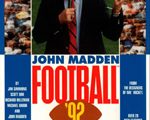
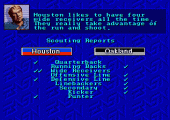
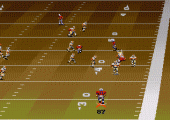
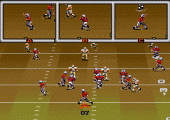
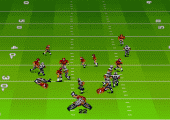
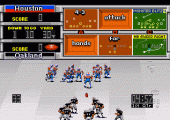
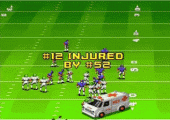
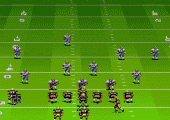
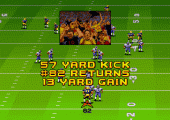
Recent Comments